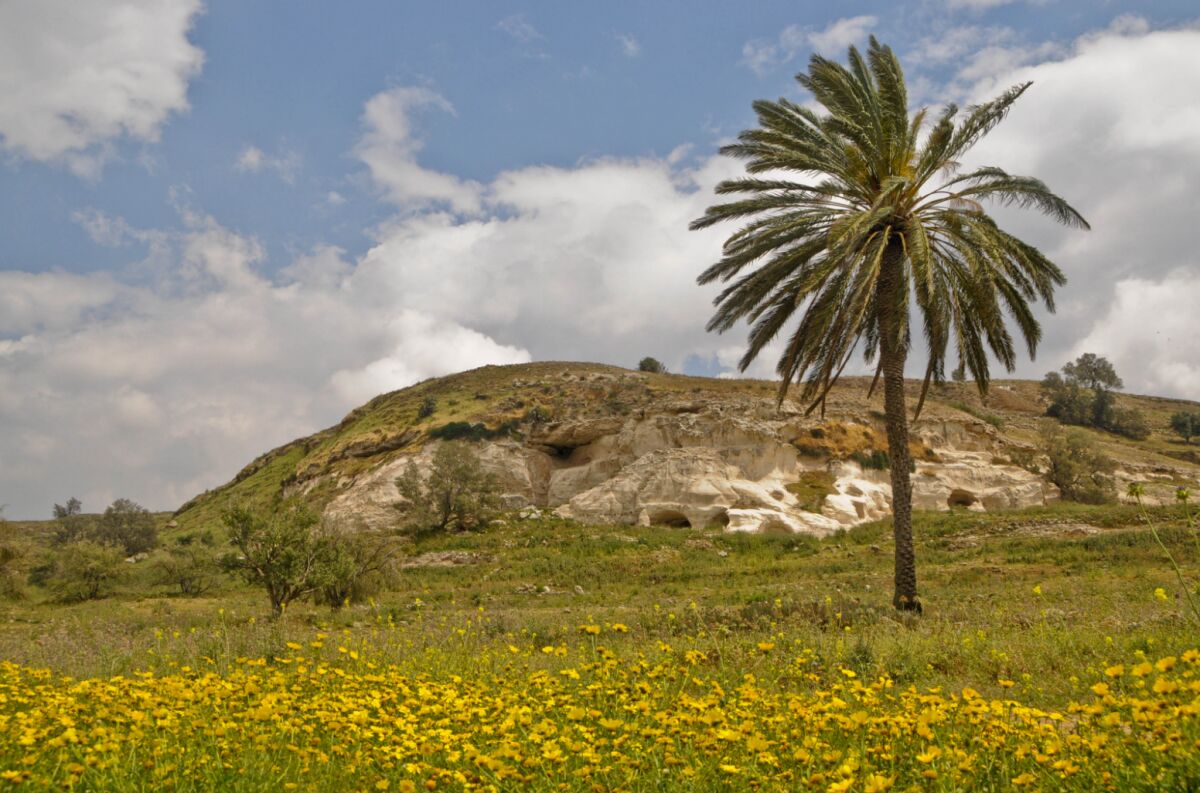On February 12, researchers from Bar-Ilan University published a report that detailed discoveries of various plants used in Philistine temples, including hallucinogenic plants. This report has shed light on details of the Philistine cult in the biblical era.
The report centered on the excavation of two temples at Tell es-Safi—biblical Gath. This was the home of Goliath (1 Samuel 17:4) and a location where the Philistines briefly stored the ark of the covenant (1 Samuel 5:8-9). These temples, constructed in the 10th and ninth centuries b.c.e., were destroyed by King Hazael of Aram around 830 b.c.e. (2 Kings 12:18).
The team, led by archaeobotanist Dr. Suembikya Frumin and Prof. Aren Maeir (the lead excavator at Gath), collected over 2,000 samples of burnt seeds and fruits from in and around the temples. The most commonly found plant species was the chaste tree, which ironically is an aphrodisiac and anesthetic. The chaste tree was used in cultic practices in later periods in Greece–including at the temple of Hera at Samos and in the worship of several gods (Artemis, Demeter and Asclepius) in the Peloponnese region. Since the Philistines and Greeks share a common ancestry (attested to in the Bible and now corroborated in recent dna research), this is an interesting cultural element that may have predated the Philistine migration and settlement.

Another interesting plant discovered at these temples is poison darnel (a.k.a. ryegrass, false wheat, or the tares described in the New Testament—Matthew 13:26). “Poison darnel is a natural source of ergot fungi containing an lsd-type alkaloid, known to be hallucinogenic,” the report said. lsd was first extracted from ergot fungi in 1938. Effects of “ergotism” may include convulsions, muscle spasms, vomiting and hallucinations. Many historians believe that ergot fungi-infected wheat is what led to the massive witch trials of the Dark Ages in Europe. The use of poison darnel is also mentioned in relation to the activities of the ancient Greek Eleusinian Mysteries cult.
How these plants were used in Philistine ritual is still largely unknown. “[I]t is plausible that temple ritual praxis included the use of medicinal and mood-enhancing additions to regular foods,” the report concluded. “This fits with the importance of the alcoholic beverages in Philistine culture Gath [another discovery of recent years], as well with the proven use of plant-related oils with hallucinogenic properties in ritual chalices, and incense altars found in Philistine temples.”
Though the Bible does not directly mention the Philistines engaging in hallucinogenic cult rituals, it may allude to similar Philistine inclinations. Isaiah 2:6, for instance, mentions “soothsayers like the Philistines” (the Hebrew word עננים). While an individual may become a “soothsayer” under the influence of a psychedelic drug, the Hebrew word can also mean “clouds,” perhaps relating to how the drugs were ingested—via a cloud of smoke from an incense altar.

For more than two decades, Professor Maeir and his team have been diligently excavating Gath. Maeir has utilized cutting-edge archaeological technology to provide better analytics of the site. “To a large extent, I would say that the incorporation of technology in our research has very much transformed the way we do archaeological research,” he said. “Compared to what we did 15 to 20 years ago, it is almost as if we are dealing with the difference between 19th-century medicine and 21st-century medicine. There’s such a whole range of analytic tools and research tools that we have jumped ahead substantially.”
These excavations have revealed important details about the culture, origin, history and practices of the Philistine people during the biblical period. Though much of the Philistine religion is still shrouded in shadowy mystique (especially concerning the exact nature of the chief god, Dagon), excavations in the temples of Philistia are slowing bringing to light the cultic practices of one of Israel’s chief enemies.

